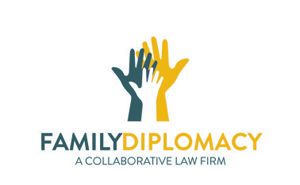Research Findings on Collaborative Divorce from England and Wales
In June 2014, United Kingdom researchers Anne Barlow, Rosemary Hunter, Janet Smithson, and Jan Ewing published a research paper titled Mapping Paths to Family Justice. The paper was based on research sponsored by the University of Exeter, the University of Kent, and the Economic & Research Council and which compared various forms of private dispute resolution for divorce, including collaborative practice.
As collaborative divorce is relatively new in England and Wales, there were comparatively few respondents for the research, so it may not be representative of all collaborative cases. Nonetheless, it may be helpful for Florida families and collaborative practitioners to review the results.
The study reviews three types of private forms of family dispute resolution. One type, solicitor negotiation, isn’t exactly utilized in Florida as we do not have do not have a distinction between solicitors and barristers, we just have attorneys. Either way, below are the definitions used for each process that was analyzed:
- Solicitor negotiation – Solicitors engage in a process of correspondence and discussion to broker a solution on behalf of their clients without going to court.
- Mediation – Both parties attempt to resolve issues relating to their separation with the assistance of a professional family mediator.
- Collaborative law – Each party is represented by their own lawyer, negotiations are conducted face to face in four-way meetings between the parties and their lawyers, with all parties agreeing not to go to court.
Below are some of the main findings and recommendations on divorces that used the collaborative law process:
- Practitioner awareness of the various types of private dispute resolution is critical to explanations and understandings by parties of their divorce process choice, expectations, and engagement with the process.
- Clients who participated in collaborative law were typically well briefed about all the aspects and there was a lot of information provided, written and verbally, before they signed up. These clients tended also to have done their own research or have known people who had been through or provided collaborative law.
- In general, the choice to attempt collaborative law was determined by awareness, access to two collaboratively-trained lawyers, and cost.
- Those who were given the collaborative law option typically made a well-informed choice, based on their desire for an amicable process and on having significant assets to discuss, and sometimes on the perceived benefit of having their own lawyer involved.
- The collaborative process attracted a high degree of satisfaction.
- People liked the opportunity to resolve problems in an amicable process, but with personal support if needed.
- The collaborative process was seen as more supportive than mediation, and quicker and less prone to inflame conflict than solicitor negotiations.
- Clients talked about good relationships with their lawyer, and how this helped their negotiations with their ex-partner.
- Other clients felt that the positive dynamic between the lawyers was conducive to a productive process, as was the fact that lawyers were working jointly with the parties.
- The fact that discussions occurred in meetings rather than by correspondence, which meant that any misunderstandings could be ironed out immediately, was a point of contrast with solicitor negotiations which people appreciated.
- Collaborative divorce was seen as relatively quick compared to solicitor negotiations.
- The main drawback of the process was cost; the four-way dynamics between lawyers and clients could also misfire.
- While practitioners worried about the effect of the disqualification clause on clients’ willingness to participate in the process, it was either seen as positive or inconsequential to the client interviewees.
- People who signed up for collaborative law tended to be low conflict, though this did not preclude the need for emotional support in the process.
- Given issues around emotional readiness, combining private dispute resolution with mental health intervention may enhance capacity to reach agreement.
- All three processes aim to focus on children’s welfare, although such a focus can be difficult to maintain in practice and requires conscious effort.
- There is an argument for more systematic inclusion of children’s voices in all three processes.
- Unlike solicitor negotiations, collaborative law consciously attempts to counteract polarization of the parties by focusing on their common interests.
- The construction of court proceedings as always the worst option seemed to be an exaggeration.
- The incidence of collaborative law was too low to compare statistically, but seems to achieve high resolution rates, particularly on financial matters.
- Satisfaction with collaborative law is very high for both process and outcomes, although parties tend to have higher resources.
- The majority of parties in collaborative law cases indicated that they settled because they reached an agreement they viewed as fair.
- Not all cases can be resolved by a private dispute resolution process. For some, pursuit of “justice” or what they perceive to be the right outcome is critical and trumps the expediency of reaching a private agreement.
- Collaborative law can often improve communication between the parties.
- The collaborative process gives clients a structured environment in which to have difficult conversations and to normalize effective patterns of dealing with each other in the future.
- One wife who used collaborative law, whose husband had dominated her in the relationship, did feel that the collaborative process had improved communication by empowering her.
- Where there is a dispute involving children, good practice involves ensuring the agenda is driven by their needs and welfare, not by the “rights” of the adults, and is carefully steered by the practitioners.
- Dealing with rather than sidestepping clients’ emotions was appreciated and helped to contain conflict.
- In collaborative law, the anchor statements made by the parties and lawyers at the outset appeared to work well to set a conciliatory tone, and in some cases effective team work between all participants meant that it was easy to forget which lawyer was representing which party.
- Signing up to the collaborative process from the outset engenders confidence in the process.
- “Weaker” or more vulnerable parties may need support from both lawyers.
- The ability to help the parties is enhanced by the establishment of cooperative relationships between lawyers, mental health professionals, financial professionals, and child consultants.
As mentioned above, these findings may not be representative of collaborative divorce cases as a whole, and they may not take into accountant differences in practice between U.K. and Florida collaborative professionals. But, at the same time, they do provide a glimpse for spouses considering the collaborative process and professionals looking to improve the process.
If you want to learn more about how collaborative law can help your family, schedule a consultation with Family Diplomacy at (813) 443-0615 or fill out our contact form. Our firm represents clients in Hillsborough, Pinellas, Pasco, Sarasota, Manatee, and Hernando counties and throughout the State of Florida.
Adam B. Cordover is co-chair of the Research Committee of the Collaborative Family Law Council of Florida, as well as a member of the Research Committee of the International Academy of Collaborative Professionals. Adam is also president of Next Generation Divorce, a network of independent attorneys, mental health professionals, and financial professionals dedicated to educating the public about collaborative practice.



Leave a Reply
Want to join the discussion?Feel free to contribute!